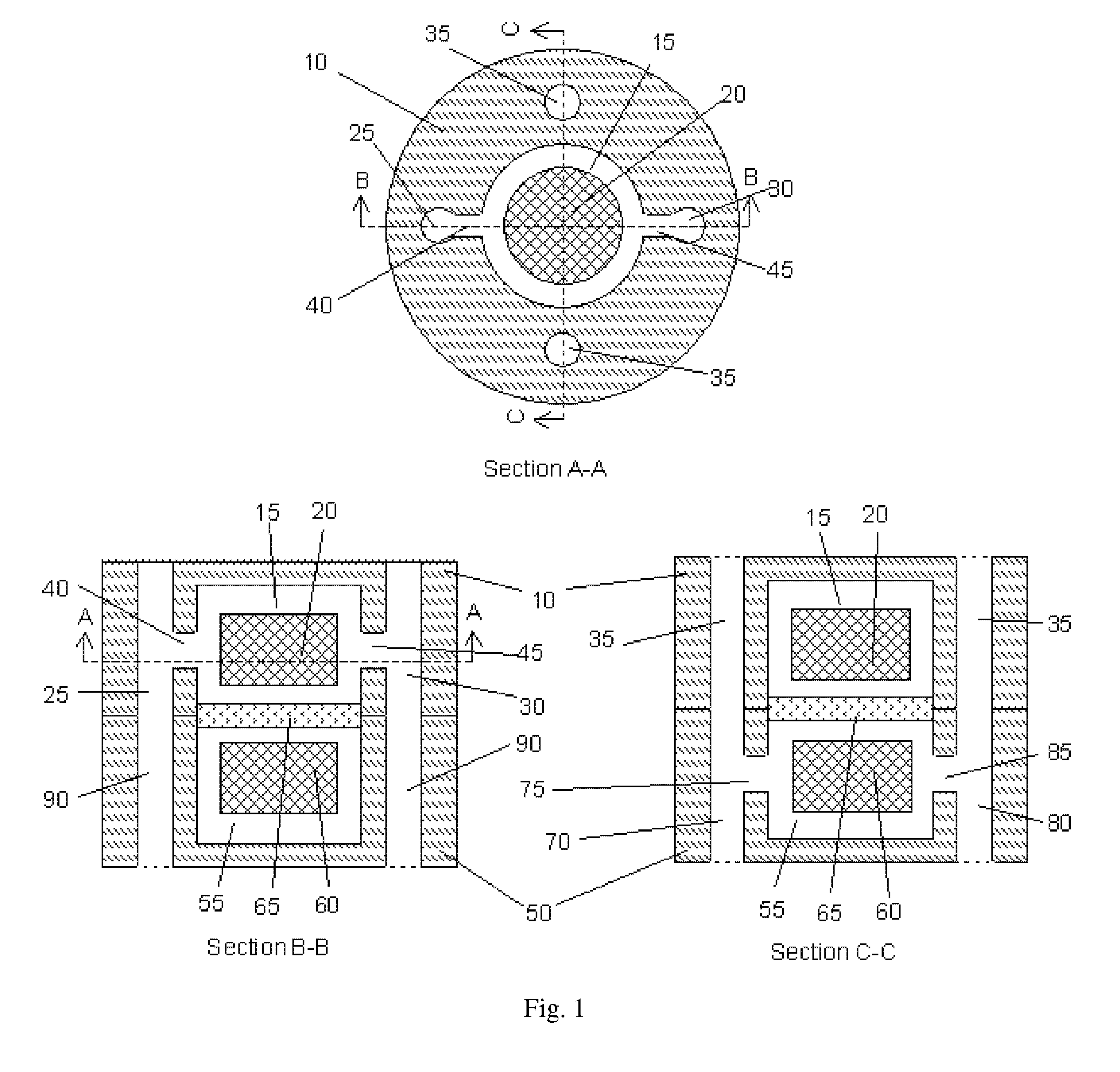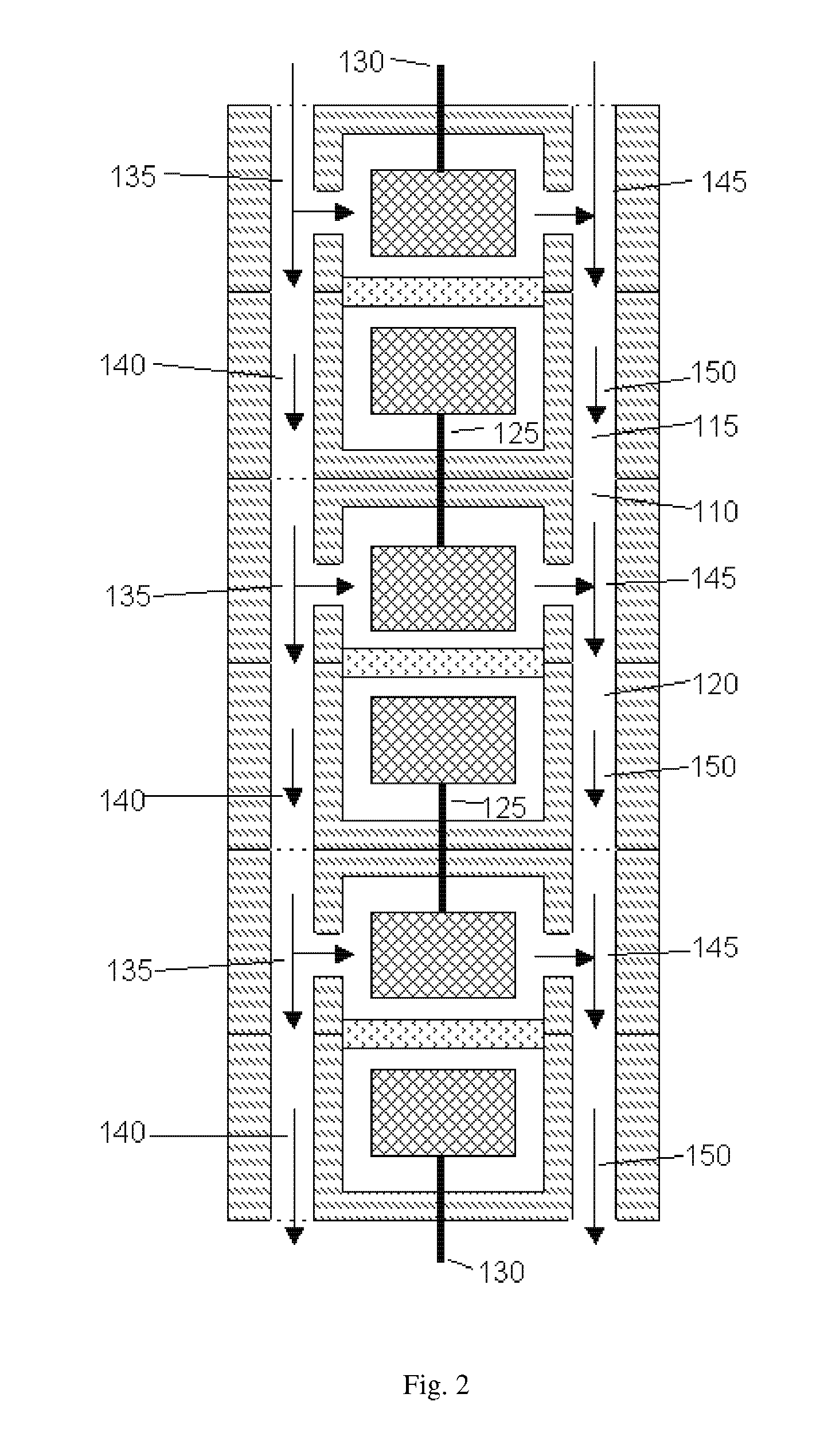Scalable microbial fuel cell with fluidic and stacking capabilities
a fuel cell and microbial technology, applied in the field of fuel cells, can solve the problems of limited proton conductance or throughput, particularly flawed solar power assumption, and inability to optimize macroscopic devices in terms of proton transport from the anode chamber
- Summary
- Abstract
- Description
- Claims
- Application Information
AI Technical Summary
Problems solved by technology
Method used
Image
Examples
example
[0054] Bacterial Culture Conditions-The facultative anaerobe S. oneidensis strain DSP10 was used for all experiments. Luria-Bertani (LB) broth (Difco Laboratories, Detroit, Mich.) was inoculated with DSP10 and incubated at room temperature for 5 days with shaking at 100 rpm. After assembling the mini-MFC (described below), 20-60 mL DSP10 culture was transferred to a sterile 100 mL Erlenmeyer flask, which was then capped with a sterile rubber stopper fitted with a cotton-plugged tube open to air and two glass tubes attached to influent and effluent lines. Within 1 hr, dissolved oxygen measurements (ISO2 probe, WPI, Inc., Tampa, Fla.) for both influent and effluent lines showed that the DSP10 culture had scavenged all available dissolved O2 (0.1±0.2 ppm). Sodium lactate as substrate was added every 1-3 days. Some bacterial cultures had the soluble electron mediator anthraquinone-2,6-disulfonate (AQDS; 100 μM) added to the anolyte.
[0055] Mini-MFCassemblyand operation-The mini-MFC desi...
PUM
 Login to View More
Login to View More Abstract
Description
Claims
Application Information
 Login to View More
Login to View More - R&D
- Intellectual Property
- Life Sciences
- Materials
- Tech Scout
- Unparalleled Data Quality
- Higher Quality Content
- 60% Fewer Hallucinations
Browse by: Latest US Patents, China's latest patents, Technical Efficacy Thesaurus, Application Domain, Technology Topic, Popular Technical Reports.
© 2025 PatSnap. All rights reserved.Legal|Privacy policy|Modern Slavery Act Transparency Statement|Sitemap|About US| Contact US: help@patsnap.com



